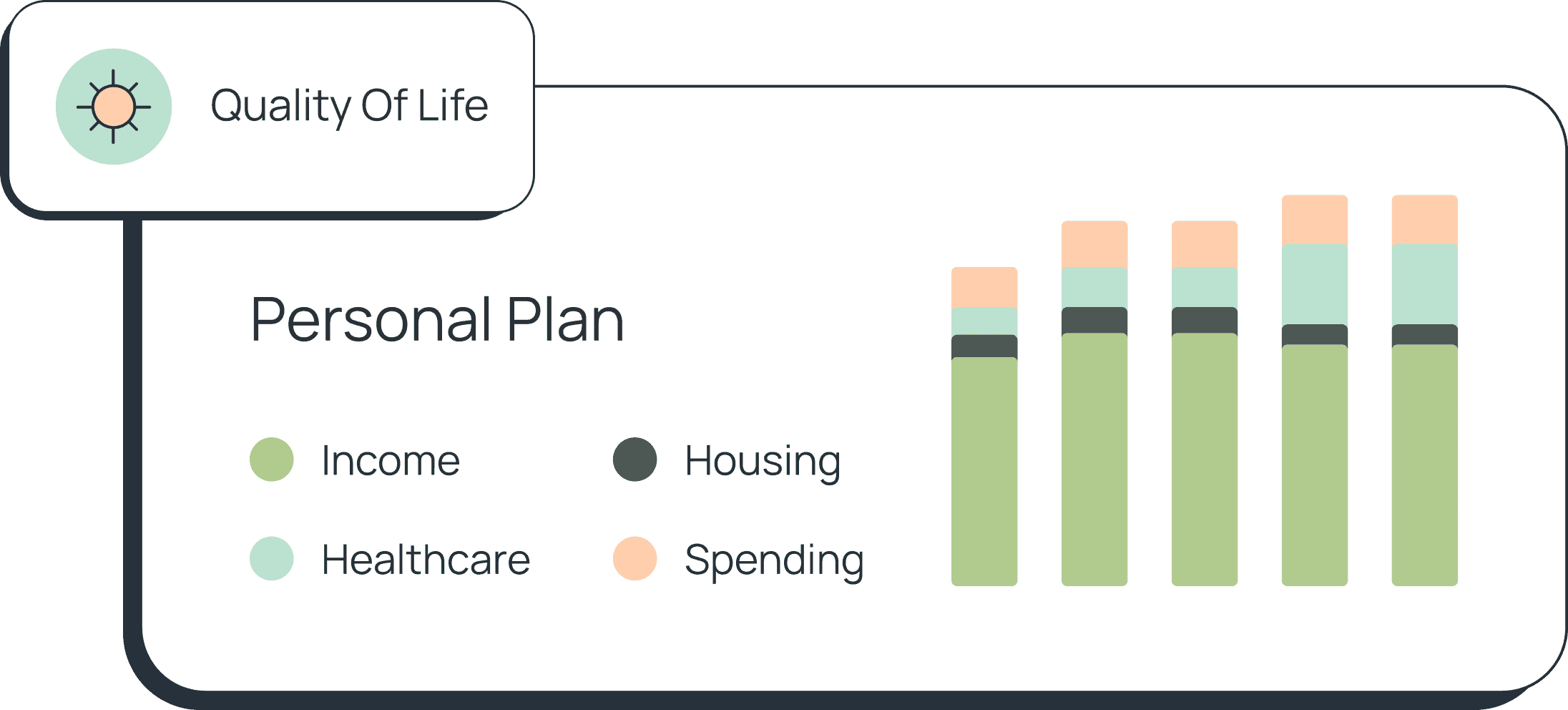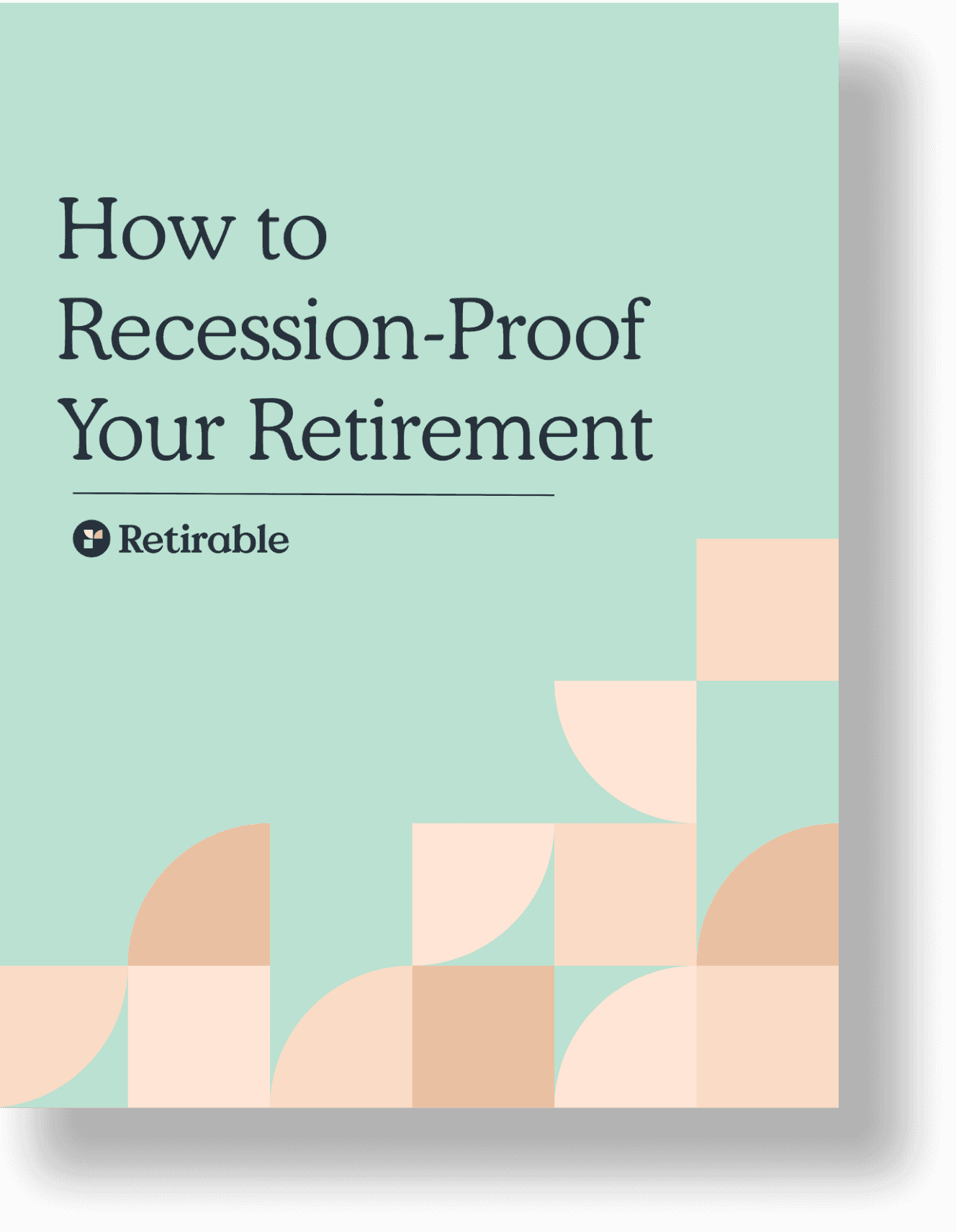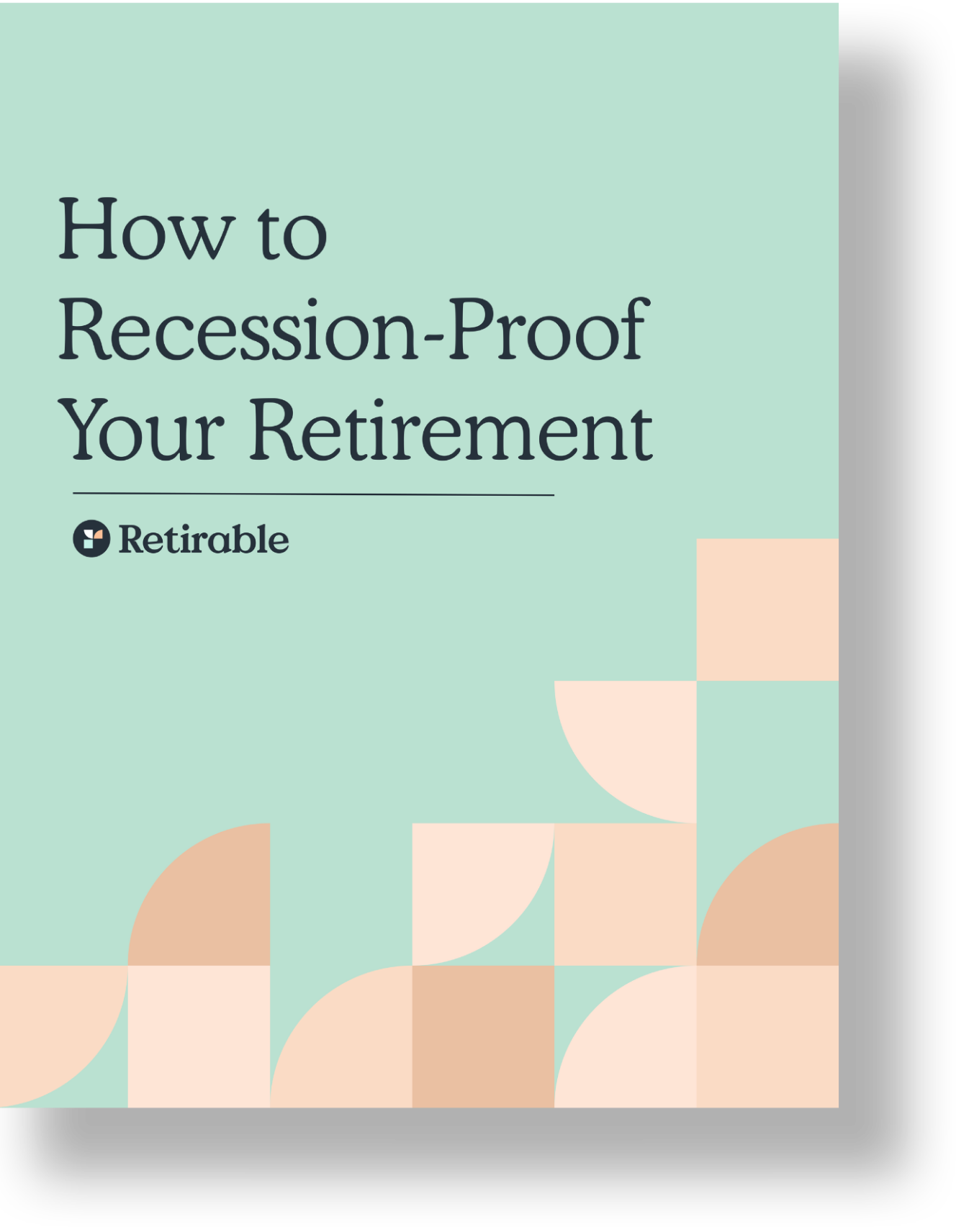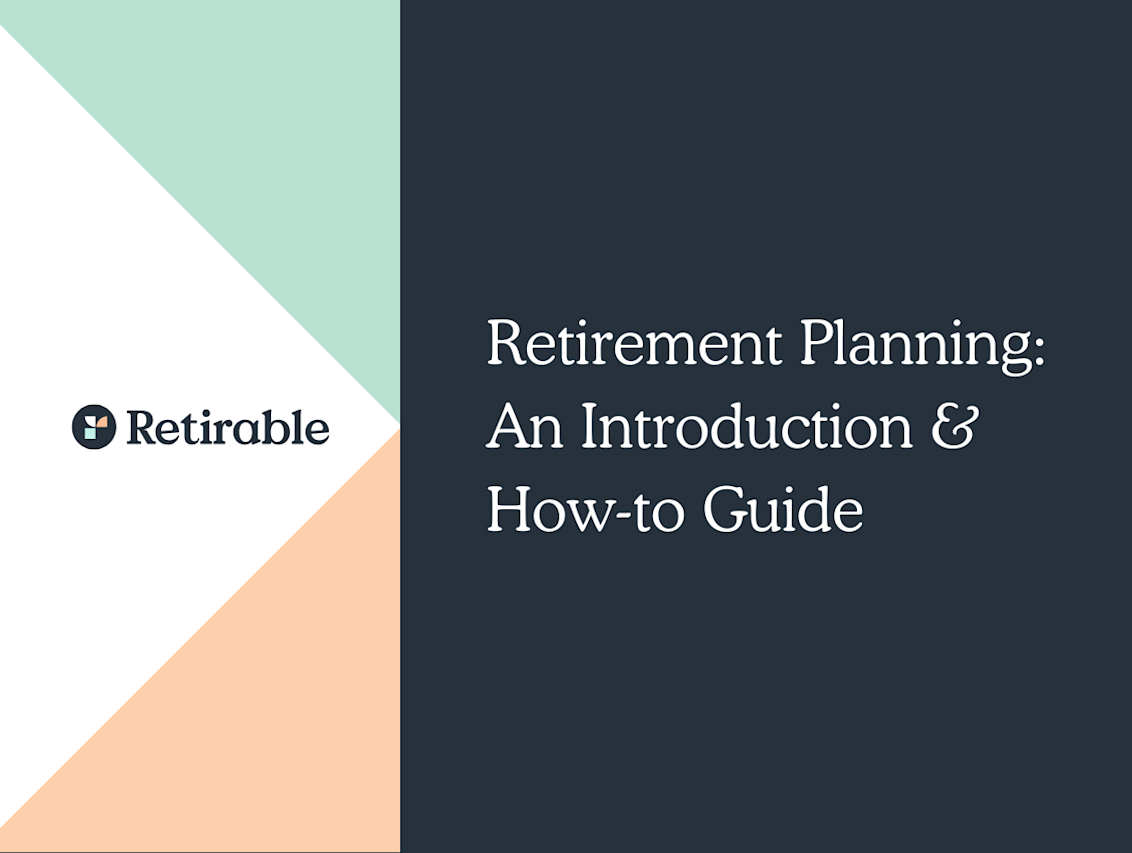Retirement Accounts
If you’ve been trying to figure out the differences between a NQDC and a TSP and don’t know if an IRA is better or worse than a 401(k), you need this article. Here, we’ve broken down the most common types of retirement accounts and shared information on which might make the most sense for your particular situation and goals.

C.E Larusso
•
Published July 19th, 2023
•
Updated December 28th, 2023
Table of Contents
Key Takeaways
There are several retirement plans that exist only for state or federal employees
Once you’ve maxed out your contribution limit on your 401(k), explore IRAs as a secondary investment tool
Some companies are better for those new to investing, offering a range of educational materials and articles
If you’ve been trying to figure out the differences between a NQDC and a TSP and don’t know if an IRA is better or worse than a 401(k), you need this article. Here, we’ve broken down the most common types of retirement accounts and shared information on which might make the most sense for your particular situation and goals. In addition, once you know what kind of accounts you need, we’ve compiled some of the top companies offering investment accounts so you can kick off your savings today in order to kick off your sandals and relax during retirement.
Unless you have a company pension, you likely have a 401(k) or 403(b)—make sure to take advantage of any company-matching contributions. Beyond that, you can set up additional savings accounts through a wealth management firm, depending on your goals.
Top 5 Companies Offering Investment Accounts in 2025
Don’t know where to start when it comes to building a savings portfolio? Take a look at these five companies, some newer and some older, which have excellent investing services.
Fidelity Investments
One of the best known players in the field, Fidelity offers a robust suite of investment options while maintaining low fees. The company offers several retirement investment accounts, such as 401(k)s, IRAs, Roth IRAs, as well as mutual funds, currencies, OTCBB (penny stocks), municipal bonds, and more. Many people appreciate Fidelity’s excellent site navigation and responsive customer service, as well as their comprehensive educational and research offerings.
Pros
- Excellent customer service and user-experience on the site and on their mobile app
- Robust educational and research offerings
- Commission-free stock and ETF trades
- Huge selection of mutual funds
Cons
- Higher broker-assisted trade fee
- Trading restrictions on some securities
- Limited personalization and advisor relationship
TD Ameritrade
TD Ameritrade, like Fidelity, offers a wide range of educational materials to help new investors and savers. In addition, the site and mobile app are easy to use and navigate, and both are backed by customer service that is available 24/7, and reachable via several different avenues: phone, text, live chat, and email. That said, TD Ameritrade still doesn’t offer fractional shares, which Fidelity does, and has some fees that are higher than average.
Pros
- Lots of educational resources for new DIY investors
- Easy-to-navigate mobile app and website
- Lots of account types available, including 529 accounts, education savings accounts, trusts and partnership accounts
- Their proprietary trading simulator, paperMoney, is free for customers
Cons
- No fractional shares
- Some accounts have higher-than-average fees
- Mutual funds have high fees
E*TRADE
Since its inception in the 1980s, ETRADE has grown from an early internet start-up to a more robust investment platform, and is now owned by Morgan Stanley. This acquisition gave ETRADE a wider suite of online research and educational offerings for investors, including insights into sustainable investing. There are lots of exciting IRA offerings from ETRADE, including one for minors to help teens with earned income save their money for the future, as well as the Complete IRA, designed for those over 59 ½. Unfortunately, ETRADE has some unnecessary fees that other platforms don’t have, and sometimes it’s difficult to find account guidance (such as how to close an account) on its website.
Pros
- Proprietary trading software that helps you assess risks and do an analysis of your investments
- Offers futures for advanced investors
- Two apps for users
- Many tools and resources available
Cons
- Website isn’t the most intuitive
- No fractional shares (except through a robo-advisor)
- No dedicated advisor
Betterment
A roboadvisor, Betterment offers two core services: one with automated portfolio management, which requires just $10 to open, and a premium service for those with $100,000+ to invest. The premium service allows members to call Certified Financial Planners who work with the company. Betterment’s structure lets you indicate specific goals (e.g. save $50,000 by 2026 for a down payment) and then create an investment strategy towards those specific goals.
Retirement, of course, can be one of those goals, and the platform is a nice way to look at your progress between your short and long-term goals all in one place. That said, the buy-in for the premium account, which gets you access to financial planners, is quite steep. For comparison, Schwab only requires $25,000 for its Intelligent Portfolio Premium offering, one-quarter of what Betterment asks.
Pros
- Different portfolio options to match different goals
- Low management fee of 0.25% AUM
Cons
- On-demand customer service only available on weekdays
- Higher fees for personal/professional advice
- No 529 or custodial account offerings
- No direct indexing
Charles Schwab
Charles Schwab has been in the investing game for a long time (since 1971, to be exact) and has tools that cater to both new investors and those who are more seasoned. There are no monthly minimum balance requirements, and no stray fees for transfers to external accounts. Other fees we learned about were very minimal and competitive for the space—for instance, you would be charged $25 for a wire transfer. While the company offers a wide range of tradable assets and accounts, including custodial IRA accounts, options for business owners, stocks, bonds, mutual funds, and more. That said, Schwab is (mostly) staying out of the cryptocurrency game for now, though clients can trade Bitcoin futures or buy into investment trusts targeting cryptocurrencies.
Pros
- Huge selection of account types, including IRAs, educational savings accounts, business accounts, and trust accounts
- StreetSmart Edge, Schwab’s proprietary trading platform, is highly customizable to your goals and research
- Commission-free stock, options, and ETF trades
Cons
- Phone tree to access customer support
Types of Retirement Accounts
Every type of retirement account has its own set of rules as to who its for, though it’s likely that with a well-developed retirement plan, you’ll end up needing more than one of the offerings listed here.
Defined-contribution plans
Defined-contribution plans are set up by an employer and allow for the employee—and sometimes the employer—to make pre-tax contributions to an account that is intended to grow until the employee retires. Different from a defined-benefit plan, These plans are usually 401(k) or 403(b) plans, but a few others exist.
It’s important to note that defined-contribution plans do not forecast a specific benefit amount during retirement, as these accounts fluctuate based on the specific investments and market ups and downs. Usually, contributions are made directly from your paycheck to the account, and you can often set the amount you’d like to contribute (by a percentage). Employers sometimes match this percentage up until a certain amount, such as 3 or 5%.
401(k) plans
One example of a tax-advantaged defined-contribution plan, 401(k) accounts are usually offered by employers, specifically for-profit companies. Employers who offer these plans may also offer matching contributions to the plan on behalf of their eligible employees; the earnings accrue on a tax-deferred basis. You will be able to withdraw the funds penalty-free when you turn 59 ½, but should expect to pay income tax at that time, depending on where you live and your income bracket. If you take withdrawals before you turn 59 ½, you will pay a hefty penalty tax.
403(b) plans
The 403(b) plan is very similar in every way to the 401(k), except that it is typically open to employees of nonprofit corporations, such as schools and arts institutions, instead of for-profit companies. In addition, many of these nonprofits do not offer matching contributions, as they do not want to lose ERISA exemption. That said, if you have been contributing to a 403(b) for 15 years or more with certain nonprofits, you might be allowed to make additional catch-up contributions that would not be allowed with 401(k) plans.
457(b) plans
Primarily for state and federal employees like firefighters and police officers, a 457(b) plan is another employer-sponsored retirement plan that allows pre-tax contributions. You are allowed to contribute up to 100% of your salary in a year, or $23,000 in 2025, whichever is less. One key difference of a 457(b) plan is if you need to withdraw from the plan prior to turning 59 ½, you won’t pay a 10% penalty. Usually, because these plans are offered to government employees, the employer does not offer matching contributions and instead sets up the 457(b) as a supplemental plan to a pension.
Solo 401(k) plan
A Solo 401(k) plan is for a business owner that has no employees, though you can use the plan to also cover your spouse (provided your spouse earns income from your business). You can open a Solo 401(k) at most online brokers, however you will need an Employer Identification Number (EIN). The yearly contribution limit for Solo 401(k) accounts is $69,000 in 2024, with an additional catch-up contribution of $7,500 for those 50 or older.
IRA plans
An IRA is another form of a retirement savings account that can be opened at a variety of places, including banks, credit unions, online brokerage companies, and insurance agencies. IRAs are funded by your contributions to the account, with limits set by the IRS depending on your age, income, and the type of IRA (more about that below). Depending on the type of IRA, contributions can be made from pretax or post tax income; this flexibility can help you plan for tax-free distributions during retirement.
Traditional IRA
Traditional IRA contributions are made with pretax dollars. Sometimes, these contributions are tax deductible, but it’s dependent on your income bracket and tax filing status. With a traditional IRA, you will pay income tax on withdrawals when you start to receive distributions after turning 59 ½.
Roth IRA
Roth IRAs do not allow your contributions to be marked as tax deductible, however qualified withdrawals in retirement are tax-free, as you pay taxes on the contributions. Choosing a Roth IRA might be wise if you anticipate your taxes in retirement higher than they are now.
Rollover IRA
A Rollover IRA is when you move savings from a former employer-sponsored retirement plan (such as a 401(k)) to an IRA. When you roll over your old retirement account into an IRA, you can choose to maintain the tax-deferred status of your funds. It’s quite easy to roll over the funds—you'll likely need to contact your old provider and fill out some forms so they can send a check to your new provider.
Spousal IRA
A spousal IRA is not a different kind of IRA, but a way to allow a non-working spouse to get access to the tax benefits of IRAs. Your non-working (or low-earning) spouse can open a spousal IRA to save up to $6,000 a year for your joint retirement plans. You must be married and file joint tax returns to open a spousal IRA.
SEP IRA
Simplified Employee Pension (SEP) IRAs are individual retirement accounts meant for business owners with few or no employees as well as self-employed people. Contributions are tax-deductible, and investments grow tax-deferred until retirement. Distributions are taxes as regular income. The SEP IRA contribution limit is $68,000 in 2024.
SIMPLE IRA
A Savings Incentive Match Plan for Employees (SIMPLE) IRA is a savings plan for employers and self-employed people. If you are an employer, you cannot have more than 100 employees, and their earnings need to be at least $5,000 in the previous year. A critical difference between a SIMPLE IRA and a SEP IRA is that only employers are allowed to contribute to SEP IRAs, but employees can contribute to SIMPLE IRAs. The employee contribution limit for SIMPLE IRAs is $16,00 in 2025, with a $3,500 contribution catch-up for those 50 and older.
Other Investment Plans
These plans don’t fit squarely into either the defined-contribution or IRA buckets, but are worth knowing about in case they apply to your circumstances.
Thrift Savings Plan (TSP)
A Thrift Savings Plan is a type of defined-contribution retirement plan only for federal employees and uniformed service members. Very similar to a 401(k), plan holders can choose to invest their money in various funds, including the Small-Capitalization Stock Index Investment (S) Fund, the Common-Stock Index Investment (C) Fund, and a mutual fund. The federal government matches contributions up to 5%, and guarantees a contribution of 1%, even if the account holder contributes nothing.
Traditional pensions
A pension is an employer-offered benefit in which an employer sets aside money into a pool that is intended to be paid out to employees after they retire. Pensions have become increasingly rare in the United States, with most private companies now opting for the less-costly 401(k) or 403(b) option, which don’t require the company to be beholden to the benefit payout. Traditional pension plans are also known as “defined-benefit” plans, as the benefit amount is specific and fixed, set to run during the employee’s retirement years, regardless of the amount in the pension pool.
Cash-balance plans
A cash-balance plan is technically a defined-benefit plan (like a pension), but it allows an option for a lifetime annuity. Here’s how that works: the employer contributes a set percentage of the employee’s wages into an account, which earns interest. Plan participants will receive a set percentage of the compensation plus a portion of the interest—this is different from traditional pensions in which an employee is promised a flat dollar amount based on years of service or an annuity. The amount you receive is determined by your salary over the years, how long you worked for your employer, and the interest credits.
Cash-value life insurance plan
Cash-value life insurance is a life insurance plan that accrues interest. Whole life insurance, universal life insurance, variable universal life insurance, and indexed life insurance are some policy types that often include a cash-value option. Part of your premium goes towards your life insurance and a separate portion goes towards your cash-value—the cash-value amount can be accessed while you are still alive, but pulling money out can affect the distribution amount that goes to your beneficiaries.
Choosing the right retirement plan for you
While choosing the right retirement plan will come down to your personal situation (i.e. do you own your own business? Are you married? Have you maxed out your 401(k) contributions for the year?), it is a good idea to take any employer plan that comes with matching contributions, and get the maximum you can from those, since it’s basically like free money. If your workplace offers 4% matching, you should also contribute 4%, as that will get you to 8% per year, on top of other savings vehicles.
Something else to note is that if you’ve maxed out your allowable contribution limit for the year on your 401(k) and have more to set aside for retirement, you should take a look at the other options available (traditional IRA, Roth IRA, high-yield savings accounts) to grow your nest egg. It’s absolutely allowed—and encouraged—to have different vehicles open for your retirement savings. Finally, consult a financial advisor—preferably a fiduciary—to discuss your options.
How to maximize your retirement savings
If you’re looking for ways to maximize your retirement savings, you’re already way ahead of most people! And if you’re here and haven’t started saving yet—it’s never too late to get started.
Let’s review:
- Take advantage of any employer-sponsored plan, and maximize the matching contributions
- Open an IRA and put additional savings there—consider a Roth IRA if you want to minimize taxes during your retirement years (subject to income limits)
- Set-up automatic deposits to all of your retirement accounts so you never see that money and are tempted to spend it elsewhere
- Review your budget and see where you can cut back to put more into your retirement savings
- If possible, delay taking your Social Security as long as you can (you’ll have to take the benefits once you turn 70) as the earlier you cash in, the lower the benefit will be
- Keep track of your money: if you lose your job, make sure your 401(k) savings comes with you; you can easily roll it over into an IRA, or move it into a new 401(k) account with your new employer
Questions to ask an advisor when selecting a retirement plan
If you decide to consult an advisor to help with your retirement plans, be prepared to ask the right questions while knowing your goals and lifestyle needs.
Should I invest in a 401(k) when there's a company match?
Always. This should be the first retirement savings step you consider, if it’s something available to you. Why? It’s basically free money! Let’s say your company matches your contributions up to 3%. If you put in 3% of your $50,000 salary every year, that’s $1,500. The amount your company contributes matches that, so that’s a total of $3,000. If that invested amount appreciates at a rate of 7%, and you see a 3% raise every year, you’d see $316,593 after 35 years without the employer match and $622,510 with it. That’s a big difference.
How do I choose between an IRA and a 401(k) and should I try both?
For the most part, your company-sponsored 401(k) should be the first choice for your retirement accounts, especially if you have employer-matching contributions. That’s for a few reasons, including: the yearly contribution limits are higher ($23,000 compared to $7,000 for IRAs in 2025) and the contributions to 401(k) accounts are always tax-deductible. That said, it’s always advisable to diversify your accounts, and if you reach the 401(k) contribution limit for the year, opening an IRA as a second investment strategy is a sound idea.
How much can I contribute to my 401(k) annually?
In 2025, 401(k) contribution limits for individuals are $23,000, or $30,000 if you’re 50 or older (this figure includes the catch-up contribution limit). Employer contributions do not count toward your individual limit.
How much should you have in savings at each age?
The amount you should have saved so you can live comfortably during retirement might not be the same for your neighbor or your best friend. While you can look at what the average person has saved for retirement at different ages, your goals for retirement could be to live lavishly on Maui while someone else might prefer a lean spending methodology in the tax-friendly state of Florida. With either option, it pays to start saving as much and as soon as possible, and consult a qualified financial advisor to set clear goals.
Share this advice

A professional content writer, C.E. Larusso has written about all things home, finance, family, and wellness for a variety of publications, including Angi, HomeLight, Noodle, and Mimi. She is based in Los Angeles.
Share this advice

A professional content writer, C.E. Larusso has written about all things home, finance, family, and wellness for a variety of publications, including Angi, HomeLight, Noodle, and Mimi. She is based in Los Angeles.
Free Retirement Consultation
Still have questions about how to properly plan for retirement? Speak with a licensed fiduciary for free.






